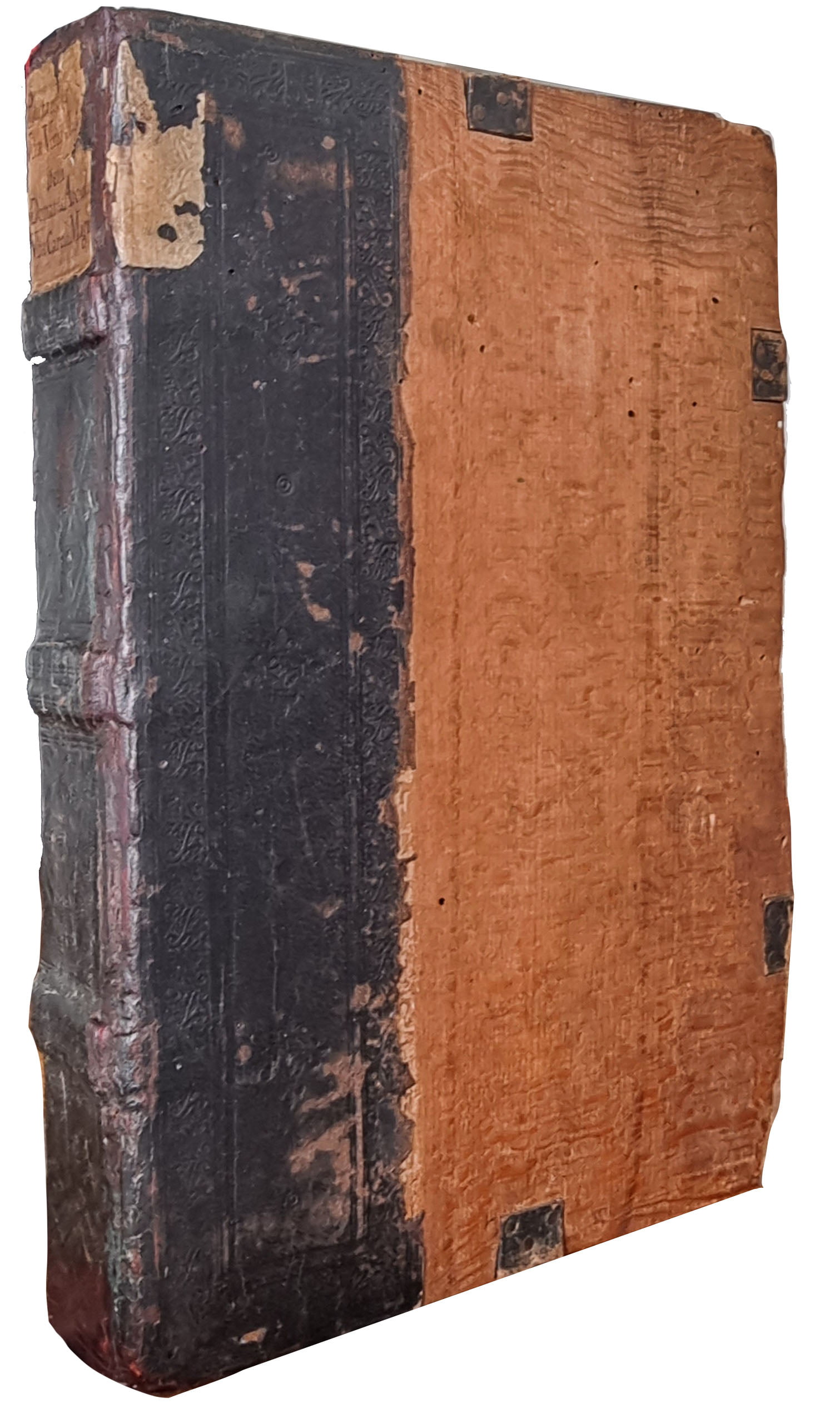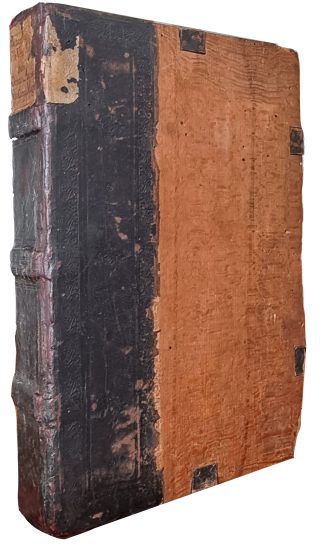PLUTARCH.
CONTEMPORARY ITALIAN BINDING
Vitae.
[Venice, Bartholomaeus de Zani, 1496].£17,500.00
Chancery folio. 306 x 296mm. ff. [1], 1-145, 1-144, a-r8 s10, A-S8, 62 lines per full page, type 80R2. First text leaf within woodcut border with heads within roundels, grotesques, putti and blank shield, ½-page woodcut of Theseus and the Minotaur/Eurytus, decorated initials and ornaments. Title and handful of ll. a bit finger-marked at margins, crossed-out early ms ex-libris to title, 2 small worm holes to upper blank margin of first 3 gatherings, intermittent slight mainly marginal foxing, heavier to last 3 ll., small oil stain at blank foot of i4-7, ink splash to lower outer blank corner of Q5-8. A very good, well-margined copy, on good-quality paper, in contemporary northern Italian quarter goatskin over bevelled wooden boards, lacking clasps, border with blind roll of tendrils, blind-stamped fleurons and roundels to central panel, raised bands, compartments cross-hatched in blind with small blind-stamped circles, C16 paper label, few scattered worm holes to boards, with loss to fore-edge of upper, joints and tail expertly repaired. Modern bookplate to front pastedown, and ms ‘A Barber 72a’ to fly, faded early ms ownership inscription at foot of a2 (final ‘lxxxij’ legible), ‘lxxxij’ inked to lower edge (early shelfmark?), few C16 ms marginalia.
The handsome contemporary binding reprises a typically northern Italian style c.1500 (e.g., Bib. dell’Archiginnasio 16.B.I.9 and 16.C.II.13).
A very good, well-margined copy of this beautifully printed edition of Plutarch’s ‘Lives’ – the fifth overall. ‘A close reprint of Ragazzo’s 1491 edition; the cut of Theseus and the Minotaur […] is printed from the block first used by Ragazzo, but the border differs’ (BMC V, 433). As frequent in Venice at this time, the same woodcuts and borders often circulated among different printers; the present also appears in 1490 and 1492 editions of Petrarch (Hind II, p.504). ‘Vitae’, by the Greek philosopher Plutarch (46-119AD), greatly influenced Renaissance ‘mirrors for princes’ and was used for moral instruction. It was also the key source for Shakespeare’s ‘Julius Caesar’, ‘Antony and Cleopatra’ and ‘Coriolanus’. The work provides 67 parallel biographies highlighting the virtues, vices and deeds of renowned Romans and Greeks, including Pericles, Theseus, Cicero, Demosthenes, Romulus and Homer, the last being Charlemagne. As in the first 1470 edition, each biography was translated by a different humanist, e.g., Guarino Veronese, Lapo Fiorentino, Leonardo Aretino, etc. The present edition includes several biographies additional to the original 48. The additions are late medieval pastiches, e.g., the life of Scipio and Charlemagne, the latter marked as ‘edited’, not translated, by the humanist Donato Acciaiuoli. The C16 annotator – a careful reader – corrected several typos and highlighted interesting passages in the lives of Tiberius, Artaxerxes, Aratus and Pyrrhus.
A very attractive incunable.
ISTC ip00834000; Goff P834; HC 13130*; Essling 595; Sander 5782; BMC V, 432; GW M34488. Not in Dibdin or Moss. A.M. Hind, An Introduction to a History of Woodcut (1935).In stock





